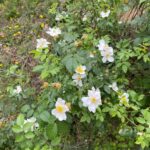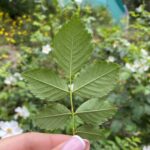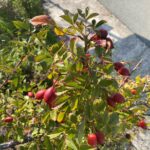Αρκοτριανταφυλλιά, Μουσσιέττα, Μουσσιεδκιά, Σσιυλούι, Κυνόροδο
Etymology of Rosa canina: The Latin name of the genus "Rosa" has uncertain origins: some authors derivate it from the Ancient Greek "ρόδον" [rodon], which among others means "rose flower, vagina", but the word itself is a loan and originates from another language/dialect, presumably from Persia. The name of the species "canina" comes from the Latin "caninus" meaning "canine, dog-like", due to the old belief that the root of this plant should treat dog rabies and the persons wounded by their bites. Additionally in Old Greece, it was called "κυνόσβατος", από το "κυνός" [kynos], meaning "dog's, of the dog" and "βάτος" [vatos], meaning "thorny shrub", hence, "dog's thorny shrub".
At least three Rosa kinds (two species and another subspecies) have been identified so far in the wild Cypriot habitat.
Rosa canina is an indigenous but non-endemic plant in Cyprus. It is encountered at an altitude of 600–1525 metres in the Troodos Mountains range as well as in the surrounding mountains; a good place to see this species in the wild is Pano or Kato Platres (Lemesos). The species can be seen either with pink-white/pink or white flowers. Its flowering period is between April and June.
How to identify Rosa canina:
- Rosa canina's pedicels are glabrous or very sparsely setose (opposite for Rosa micrantha subsp. chionistrae)
- Rosa canina's leaflets are inodorus (opposite for Rosa micrantha subsp. chionistrae) , and not glandular on the undersurface; they are glabrous or almost glabrous on both sides (Rosa corymbifera's leaflets are pubescent on the undersurface)
- Rosa canina's sepals are not conspicuously glandular externally (opposite for Rosa micrantha subsp. chionistrae)
- Rosa canina's petals can be pink or white
- Rosa canina's styles are distinctly pilose (Rosa corymbifera's are glabrous or thinly pilose)






